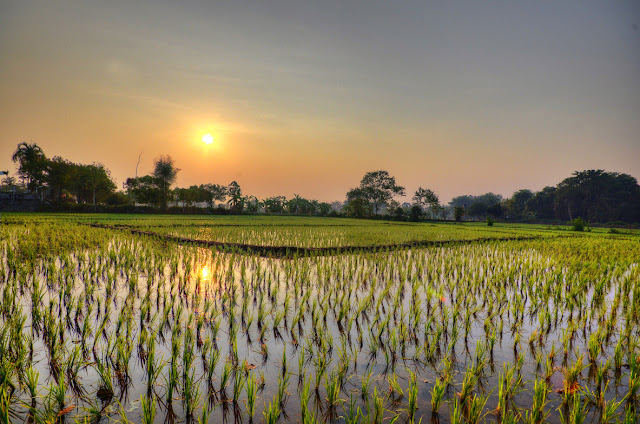Rice in Thailand
As a new rice crop is underway now, I thought I'd share what I've learned so far.
Obviously, like every other country in Asia, rice is the diet's main staple. But some of countries in the area actually import rice. With the fifth largest amount of land under rice paddies, Thailand is the world's largest exporter of rice. It's main variety for export is fragrant, long grained Jasmine Rice. Over half of Thailand's farmland is devoted to rice production. There are over 9 million hectares or 22 million acres old-school of rice paddies in the country. Thais actually use a measurement called the "rai." There are 6.47 rai in a hectare and 2.4 rai in an acre. Over half the population are employed in the business, and considering Thailand has only a 2% unemployment rate that's a lot of people.
When the 2012-2013 tally comes in, Thailand may have a bumper crop of 38 million metric tonnes.
As a side note, Thailand uses the Western calendar for business but day to day usage is the Buddhist calendar. When discussing classic cars with some students, I mentioned I had a '57 VW. The students all added 543 to see what it was in Buddha time, as it's 2556 here.
Rice has been grown here for 4500 years. But the days of a peasant farmer who owns a small plot, grows enough for his family, and then sells the rest are coming to a halt. It is a big business now and rice is not even being started from seed as much as GMO seedlings are increasingly being used.
Thailand has a long history of producing much higher quality, but low yield, slower growing rice. I'm afraid GMO will be counter productive if quality is to be maintained.
Whether started from seed or seedling, the rice is planted in a small square until large enough to be transplanted. The rest of the field will be filled in by hand, one plant at a time.
Scarecrow to protect young plants before transplant
Ricefield workers planting the rest of the field after the seedlings are tall enough.
A field of newly transplanted rice. At the time of harvest after the rainy season, the plants may reach a height of 1.5 meters or 5 feet. To me, the sight of the countryside, lush with the bright green rice paddies, is akin to a country road back in North America covered in snow.
Thailand Rice Exporters Forum














